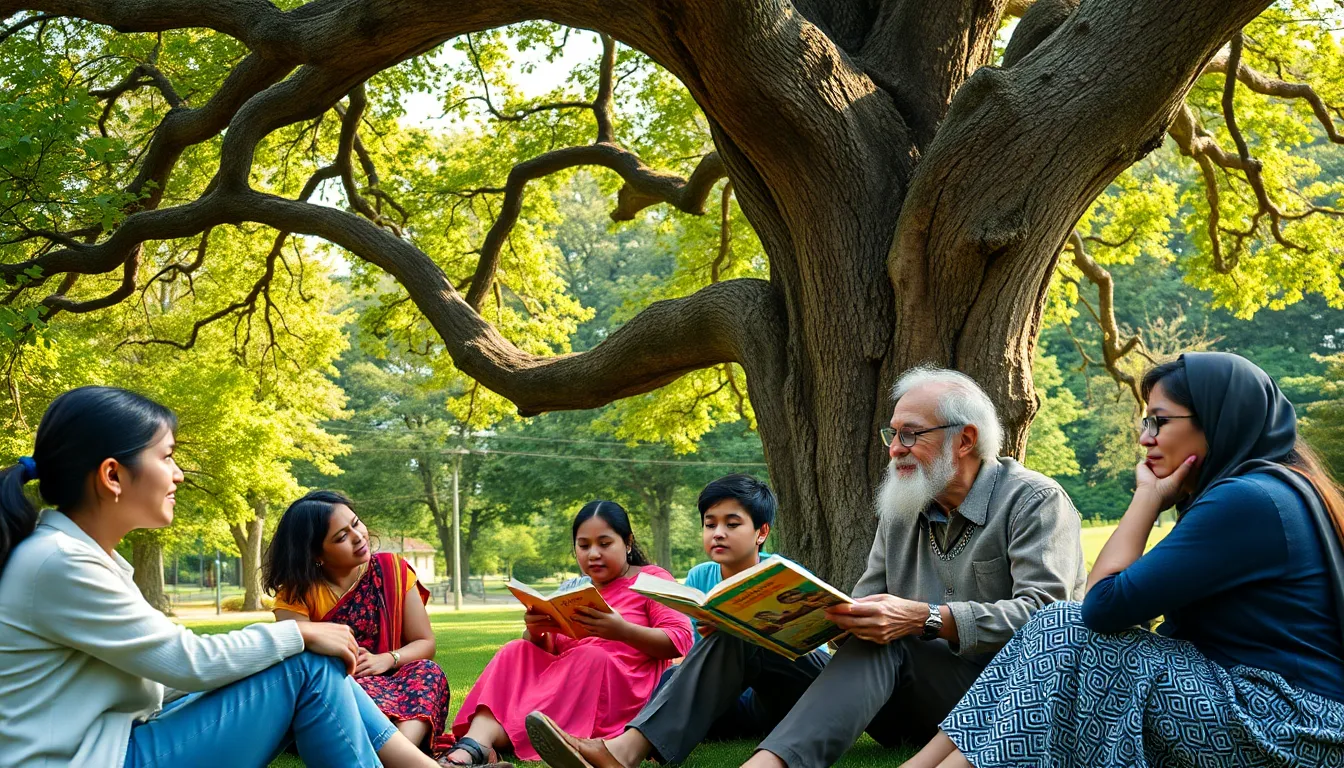Kambhistories represent a fascinating intersection of culture, tradition, and storytelling. Rooted in the rich tapestry of history, these narratives capture the essence of human experience, weaving together tales of resilience, community, and identity. As they unfold, they reveal not just the events of the past but also the values and beliefs that shape societies.
In today’s fast-paced world, the importance of kambhistories can’t be overstated. They serve as a reminder of where we come from and the lessons learned along the way. By exploring these stories, individuals can connect with their heritage and gain a deeper understanding of the world around them. Whether through oral traditions or written accounts, kambhistories invite readers to engage with the past in a meaningful way, ensuring that these vital narratives continue to resonate for generations to come.
Table of Contents
ToggleOverview of Kambhistories
Kambhistories serve as critical narratives that encompass various cultural traditions and collective experiences. They reflect themes such as resilience, community bonding, and identity formation. These stories often originate from diverse cultural backgrounds, making them rich in context and meaning. Through oral or written expressions, kambhistories preserve knowledge and experiences that shape personal and communal identities.
Kambhistories highlight essential values and lessons drawn from previous generations. They create pathways for individuals to explore their ancestry while fostering a sense of belonging. Engaging with these narratives not only enhances understanding of specific cultures but also illuminates universal human experiences.
In contemporary society, the importance of kambhistories continues to grow. They provide solace during challenging times, reminding individuals of their roots and shared histories. By emphasizing cultural continuity, kambhistories ensure the transmission of wisdom and values across generations.
Historical Significance of Kambhistories

Kambhistories hold substantial historical significance, deeply rooting their narratives in cultural and social realms. These stories not only reflect past experiences but also serve as conduits for preserving heritage.
Cultural Impact
Kambhistories significantly influence cultural preservation. They capture traditions, beliefs, and practices passed through generations, acting as vital tools for maintaining cultural identity. Various communities utilize kambhistories to educate younger generations, ensuring continued connection to their roots. Elements such as language, rituals, and moral lessons featured in these stories help shape cultural norms. Furthermore, the storytelling approach fosters creativity and artistic expression, enriching communities’ cultural fabric.
Social Influence
Kambhistories exert social influence by building community bonds. These narratives encourage shared experiences, supporting collective memory among individuals. As people engage with kambhistories, they nurture relationships and facilitate intergenerational dialogue, strengthening familial and community ties. They also inspire social movements, uniting people around common values and goals. By addressing themes of resilience and identity, kambhistories empower individuals to confront contemporary challenges while fostering empathy and understanding within a diverse society.
Key Elements of Kambhistories
Kambhistories incorporate essential elements that enhance their depth and impact. The narrative techniques and character development within these stories contribute significantly to their resonance across diverse audiences.
Narrative Techniques
Kambhistories employ various narrative techniques to engage readers and convey core messages.
- Oral Traditions: Kambhistories often originate from oral traditions, incorporating storytelling methods passed down through generations. These techniques emphasize voice modulation and expression, enriching the narrative experience.
- Imagery: Vivid imagery enhances the reader’s emotional connection to the story, making cultural artifacts and environments come alive. This technique enables readers to visualize settings and understand cultural contexts profoundly.
- Symbolism: Symbolic elements within kambhistories reflect broader cultural meanings and beliefs. Objects, events, or characters often symbolize important concepts, reinforcing themes like resilience and identity.
- Flashbacks: Utilizing flashbacks allows storytellers to weave past and present experiences seamlessly. This technique provides context and deepens understanding of characters’ motivations and cultural backgrounds.
- Dialogue: Authentic dialogue captures cultural nuances and conveys character emotions, enhancing relatability. Engaging conversations often reflect community dynamics, enriching the storytelling experience.
Character Development
Character development is pivotal in kambhistories, shaping narratives and driving engagement.
- Dynamic Characters: Kambhistories feature dynamic characters who evolve throughout the story. Readers see their growth through challenges, fostering empathy and encouraging personal reflection.
- Cultural Identity: Characters often embody specific cultural identities, providing insights into traditions and values. Their experiences highlight the interplay between individual choices and collective history.
- Interpersonal Relationships: The relationships between characters illustrate community bonds and influence character decisions. Through these interactions, kambhistories convey lessons on collaboration, support, and resilience.
- Role Models: Many kambhistories introduce role models who inspire and guide others. These characters exemplify virtues like courage and compassion, serving as aspirational figures within their communities.
- Conflict and Resolution: Conflict motivates character growth and advances the storyline. The resolution of these conflicts often imparts valuable lessons, emphasizing the importance of understanding and reconciliation within the community.
Modern Interpretations of Kambhistories
Modern interpretations of kambhistories adapt traditional narratives to resonate with contemporary audiences. These adaptations reflect current societal values and challenges, ensuring that the essence of kambhistories remains relevant.
Digital Storytelling
Digital storytelling correlates with the rise of technology. Filmmakers, authors, and artists convey kambhistories through podcasts, social media, and online platforms. This medium allows for wider distribution, fostering global connections with diverse audiences. Engaging visuals enhance narratives, making them accessible to younger generations.
Multicultural Fusion
Multicultural fusion characterizes modern kambhistories. Creators blend elements from various cultures, showcasing the interconnectedness of human experiences. This approach not only preserves original stories but also recontextualizes them, reflecting the dynamics of identity in a globalized society. As a result, kambhistories encourage dialogues across cultures and communities.
Focus on Marginalized Voices
Focus on marginalized voices marks a significant shift in modern kambhistories. Recent narratives prioritize underrepresented perspectives, highlighting the experiences of women, ethnic minorities, and LGBTQ+ individuals. By amplifying these stories, kambhistories challenge dominant narratives and foster inclusivity, ensuring all voices contribute to the broader cultural fabric.
Educational Applications
Educational applications of kambhistories play a vital role in teaching cultural heritage. Schools incorporate these narratives into curricula, providing students with insights into history and identity. Interactive discussions around kambhistories enhance critical thinking and empathy, equipping learners to navigate a diverse world.
Social Activism
Social activism emerges as a theme in modern kambhistories. These narratives empower individuals to address contemporary issues such as climate change, social justice, and human rights. By intertwining storytelling with activism, kambhistories inspire audiences to take action, reinforcing their relevance in today’s society.
Through these modern interpretations, kambhistories continue to serve as vital narratives, bridging the past and present while fostering cultural dialogue and understanding.
Kambhistories represent a vital intersection of culture and storytelling that resonates deeply in today’s society. They foster connections to heritage while imparting timeless lessons that transcend generations. By embracing both traditional and modern interpretations, these narratives continue to evolve, reflecting contemporary values and challenges.
Their role in cultural preservation and community building is indispensable, encouraging dialogue and understanding among diverse groups. As kambhistories adapt to new mediums and incorporate marginalized voices, they inspire individuals to engage with their identities and confront current issues. Ultimately, these powerful stories ensure that the wisdom of the past remains relevant, enriching lives and shaping futures.





